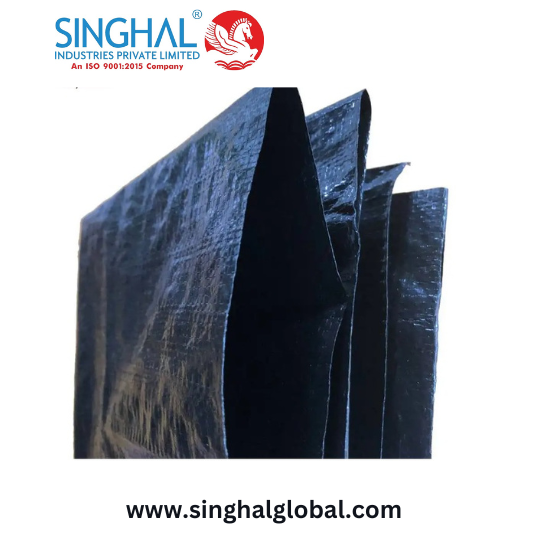
If you’re considering installing a pond on your property, one of the most important decisions you'll make is choosing the right pond liner. Reinforced Polyethylene (RPE) pond liners are a popular choice due to their durability, flexibility, and resistance to environmental factors. However, with numerous RPE Pond liner Suppliers on the market, selecting the right one can be overwhelming. This guide will help you understand what RPE pond liners are, why they are a great choice, and how to find the best suppliers for your needs. We will also address some common questions to make your decision easier.
What is RPE Pond Liner?
Reinforced Polyethylene (RPE) pond liners are a type of liner made from a strong, flexible, and durable material. They are composed of multiple layers of polyethylene film that are reinforced with a scrim fabric. This combination provides exceptional strength and resistance to punctures, tears, and UV rays, making RPE liners ideal for pond applications.
Why Choose RPE Pond Liners?
-
Durability: RPE pond liners are known for their robust construction. The reinforced fabric ensures that the liner can withstand harsh environmental conditions, including extreme temperatures and heavy foot traffic.
-
Flexibility: The material is highly flexible, which allows it to conform to the shape of your pond. This flexibility makes installation easier and helps create a smooth, seamless finish.
-
UV and Chemical Resistance: RPE liners are designed to resist UV rays and various chemicals, which prolongs their lifespan and maintains the quality of the pond water.
-
Ease of Maintenance: The smooth surface of RPE liners makes it easier to clean and maintain your pond. Algae and other debris are less likely to adhere to the liner, reducing the frequency of cleaning.
How to Choose the Right RPE Pond Liner Supplier
When selecting an RPE pond liner supplier, consider the following factors:
-
Product Quality: Ensure that the supplier offers high-quality RPE liners. Look for products that are made from reputable manufacturers and have a proven track record of performance.
-
Customer Reviews: Check customer reviews and testimonials to gauge the reliability of the supplier. Positive feedback from previous customers can provide insights into the quality of both the product and the service.
-
Range of Products: A good supplier should offer a variety of RPE Pond liner Price with different thicknesses, sizes, and specifications. This ensures that you can find a liner that meets your specific needs.
-
Pricing: While cost is an important factor, it should not be the only consideration. Compare prices among different suppliers but also consider the quality and warranty offered.
-
Customer Service: Reliable customer service is crucial for addressing any questions or issues you may encounter. Choose a supplier known for its responsive and helpful customer support.
Top RPE Pond Liner Suppliers to Consider
To help you get started, here are a few reputable RPE pond liner suppliers that are known for their quality products and excellent customer service:
-
Pond Armor: Pond Armor is well-regarded for its high-quality RPE pond liners and a wide range of pond-related products. They offer various thicknesses and sizes to accommodate different pond projects.
-
Firestone Building Products: Firestone is known for its durable and reliable pond liners. Their RPE liners are designed to withstand harsh conditions and provide long-lasting performance.
-
Aquascape: Aquascape is a popular supplier of pond supplies, including RPE liners. They are known for their comprehensive selection and excellent customer service.
-
Geotextile: Geotextile offers a range of pond liners, including RPE options. They are known for their quality products and expertise in pond construction.
Conclusion
Choosing the right RPE pond liner supplier is a crucial step in ensuring the success of your pond project. By understanding the benefits of RPE Pond liner Installation and evaluating suppliers based on product quality, customer reviews, range of products, pricing, and customer service, you can make an informed decision. With the right liner and supplier, you’ll be well on your way to creating a beautiful and functional pond that enhances your outdoor space for years to come. If you have any further questions or need assistance, don’t hesitate to reach out to potential suppliers or consult with a professional for expert advice.
Frequently Asked Questions (FAQs)
1. What is the difference between RPE and EPDM pond liners?
RPE (Reinforced Polyethylene) and EPDM (Ethylene Propylene Diene Monomer) are two different types of pond liners with distinct characteristics. RPE liners are known for their durability, puncture resistance, and flexibility, making them suitable for a variety of pond sizes and shapes. EPDM liners, on the other hand, are made from rubber and are known for their excellent flexibility and UV resistance. Both types have their advantages, so the choice depends on your specific needs and budget.
2. How long does an RPE pond liner typically last?
RPE pond liners are designed to be long-lasting, with a typical lifespan ranging from 20 to 30 years. Their durability and resistance to UV rays and environmental factors contribute to their longevity. Proper installation and maintenance can further extend the lifespan of your RPE liner.
3. Can I install an RPE pond liner myself, or should I hire a professional?
While it is possible to install an RPE pond liner yourself, hiring a professional is often recommended for the best results. Professional installers have the experience and expertise to ensure proper installation, which is crucial for preventing leaks and ensuring the liner fits correctly. If you choose to do it yourself, make sure to follow the manufacturer's installation instructions carefully.
4. What should I look for in a warranty for an RPE pond liner?
When evaluating warranties for RPE pond liners, consider the duration and coverage of the warranty. A good warranty should cover defects in material and workmanship for a substantial period, typically 15 to 30 years. Additionally, check for any exclusions or conditions that may affect the warranty, such as improper installation or damage caused by external factors.

